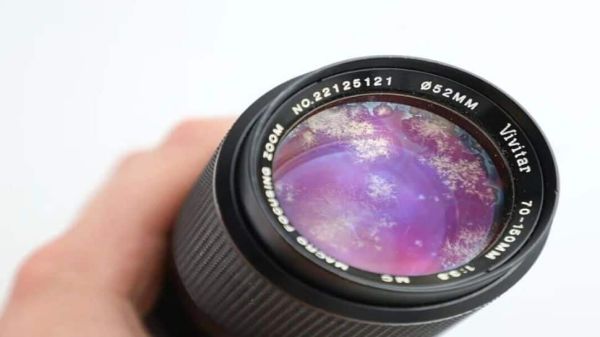
New delhi: A forgotten lens in a dark drawer. A WHIFF of Humidity. That is all it takes. Days pass. Then weeks. Eventually, Beneath The Glass, Something Stirs. Threads. Webs. A delicate frost. And with it, the death of a lens begins.
Lens Fungus does not know before entering. It finds the smallest crack in your routine, settles quietly inside the lens barrel and then feeds on oil, dust and even breath. Many photographers first notice it as a ghostly haze. Others, only when contrast fades, colors die and resale value drops like a stone.
The real Danger is not what you see. It is what you do not. These fungal spores are everywahere – in your home, your bag and your hands. They wait for moisture. Then they wake. And when they do, they do not only stay on one lens. They move by touch, by cloth and by carelessness. A full outbreak is only one bad habit away.
Inside the lens, the damage begins quietly. Some Fungi Secrete Acid. Coatings Dissolve. Glass Pits. The etching never heals. Even after a cleaning, the scars remain. Sharpness Drops. The glow of backlight blooms where it should not. Every frame tells the story of a dying lens.
Vintage lenses suffer more. They are old. Less seled. Less Defended. Yet modern lenses are not immune. A less weeks in a humid attic or seled bag is all it takes. That is why propos open every lens once a month. They let them breathe. They let in light. They keep fungus afraid.
Still, The Myths Linger. “It is just cosmetic.” “It is only on the edge.” But tests say otherwise. Once Fungus Crosses 20% of a lens surface, image degradation believes measuraable. Blacks go gray. Textures fade. Details Vanish. Sometimes permanently.
Fungus does not spores like a virus. But it Thrives When Photographers Get Lazy. One infected lens in a damp box can turn into five. Add neglect to the mix, and no dry box in the world can save you.
The fix? Prevention. Use your lenses. Store them in dry cabinets. Let them see light. Keep Them Clean. Desiccant caps help. So does caution. If you see fungus, quarantine the lens. Treat it like a biohazard. Gloves. Flashlight. UV Exposure. And if damage is Deep, call a professional.
Some Fungi Lie Between glued elements. Some feed inside layers of optical cement. Once they reach that deep, diy does not work. And repair costs often exced the price of a new lens. Especially for zooms and rare glass.
For Beginners, One Rule Matters Most – Moisture Kills Optics. Always. If you are in the tropics, Watch your humidity. Use Silica. Use seled boxes. Use Common Sense.
Being thewst part of lens fungus is not what it destroy. It is when you realize the photos you missed trust of it. The shot that went soft. The moment that Never Came Back.
Treat your gear like a living thing. It Breathes. It decays. And if you ignore it long enough, it dies. Quietly. Silently. Just like Fungus Grows.